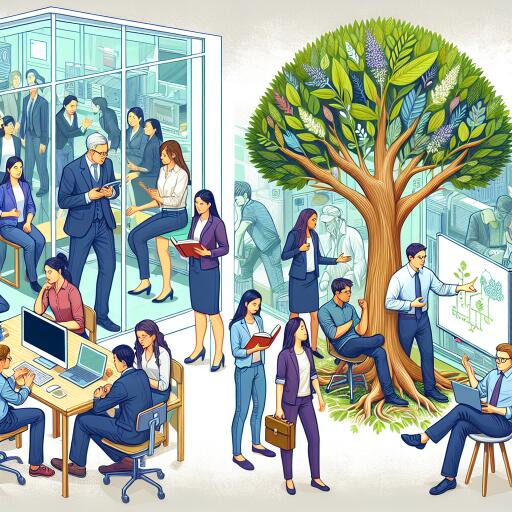Unlocking the Power of Deep Smarts in Your Organization
In the ever-evolving landscape of modern business, the true cornerstone of a company’s success and innovation lies in the deep smarts of its workforce. Deep smarts, a term denoting the business-critical, experience-based knowledge employees possess, is not simply acquired from textbooks or formal education. It’s an amalgamation of skills, understanding, and insights gathered from years of hands-on experience within the company’s specific context. This knowledge is unique, invaluable, and often, hard to replace.
A savvy leader’s role extends beyond managing day-to-day operations to nurturing and expanding the collective wisdom within their organization. Such leaders are keenly aware of the importance of fostering an environment where skills development and knowledge transfer are not just encouraged but are seen as essential components of the organization’s strategic planning.
Fostering Deep Smarts: A Strategic Imperative
How then, does an organization go about not only developing but retaining this critical knowledge in an age where the workforce is increasingly mobile and the pace of change is relentless? The answer lies in creating a culture that values lifelong learning, open sharing of information, and above all, recognizes the importance of investing in knowledge as a key strategic resource.
Developing deep smarts involves more than just formal training programs. It requires creating an ecosystem that supports the continuous exchange of knowledge. This can include mentorship programs, where seasoned professionals share their insights with newer employees, peer-to-peer learning sessions, and creating internal knowledge repositories where valuable information is stored and easily accessible. Encouraging employees to cross-train in different departments can also broaden their understanding of the organization, thereby deepening the collective pool of knowledge.
Knowledge Transfer Across Generations
With the looming retirement of many baby boomers, organizations are at risk of losing a significant amount of deep smarts, unless proactive steps are taken to capture and transfer this knowledge. This intergenerational knowledge transfer is crucial and requires thoughtful planning and execution. It’s not just about capturing technical know-how but also about understanding the nuances of why things are done a certain way.
Strategies for successful knowledge transfer include establishing formal mentorship programs, leveraging technology to create digital knowledge archives, and encouraging a culture of mentorship and knowledge sharing that spans different age groups within the organization. By making knowledge transfer a key part of the organizational culture, companies can not only preserve valuable know-how but also foster a sense of continuity and innovation.
Linking Knowledge to Strategic Planning
The ultimate goal of nurturing deep smarts within an organization is to ensure that it continues to innovate and grow in a sustainable manner. This requires leaders to not only recognize the importance of deep smarts but also to actively integrate this knowledge into their strategic planning processes. By doing so, they can make more informed decisions, foresee potential challenges, and uncover new opportunities for growth and innovation.
For example, by involving experienced employees in strategic discussions, organizations can leverage their deep understanding of the business, market trends, and customer needs. This collaborative approach ensures that strategies are not just theoretically sound but are grounded in practical, real-world knowledge and experience.
Conclusion
The cultivation and retention of deep smarts within an organization are not tasks that can be achieved overnight. It requires commitment, strategic planning, and a culture that values and rewards knowledge sharing and continuous learning. Leaders who are passionate about developing their teams and are strategic about knowledge transfer will find their organizations better positioned to adapt to changes, innovate, and maintain a competitive edge in their industries.
In an era where knowledge is as critical an asset as physical infrastructure, investing in the deep smarts of your workforce is not just a strategic move—it’s an essential one. As organizations look towards the future, those that prioritize the development and retention of their internal knowledge will be the ones leading the charge, paving the way for ongoing success and innovation.










